Pablo Picasso is one of the most influential artists of the 20th century. He was a well-known painter, sculptor, ceramicist, and theater designer.
He founded the Cubist movement, invented the constructed sculpture, and is even credited for co-inventing the collage.
He was born on October 25, 1881, in Malaga, Spain, but spent most of his life in France. He died in Mougins, France, on April 8, 1973, and his artworks continue to make an impact on artists today.
The Spanish artist created over 20,000 artworks during his lifetime. This included around 13,500 paintings, prints, drawings, sculptures, ceramics, and theater sets.
Where do you even begin to appreciate his prolific work? You can jumpstart your Picasso education with these eight must-see Picasso paintings:
1. Guernica
Guernica is considered Picasso’s most famous work.
It is often regarded as one of the most moving anti-war paintings in history. It also showcased a shift in Picasso’s mostly apathetic attitude about his home country’s politics.
The black-and-white painting was created in 1937 while Spain was in the middle of a civil war.
In January, Picasso was commissioned to create a mural of the Spanish pavilion at the Paris World’s Fair to help raise awareness about the war. Picasso agreed, but he worked on it very slowly. Very little work was done over the first few months.
However, on April 26, 1937, Nazi warplanes bombed Guernica in support of the fascist Francisco Franco. Guernica had been the opposition’s stronghold.
The incident lit a fire in Picasso, who then finished the painting in just 35 days.

The Guernica showcased the agony of the town: a grieving woman with a dead child, a horse flailing in pain with a hole on its side, a wide-eyed bull with its tail on fire, a dismembered soldier on the ground, a severed arm holding a shattered sword, and more.
There are also hidden images within the painting.
The Guernica was brought around the world to raise funds for Spanish refugees. The Museum of Modern Art had custody of the painting for a long time because Picasso didn’t want it in Spain as long as Franco was still in power.
When Franco died two years after Picasso passed, Spanish leaders negotiated to bring home the Guernica. It is currently on display at the Museo Reina Sofia in Madrid.
2. The Old Guitarist
Picasso is known to change his artistic styles, so art scholars have divided his work into distinct periods:
- Early Work
- Blue Period
- Rose Period
- African Period
- Cubism
- Neoclassicism
- Surrealism
- Later Work
The Old Guitarist is Picasso’s most famous work from the Blue Period, which spanned 1901 to 1904. During this period, Picasso used predominantly blue hues to showcase the misery of the downtrodden.
In The Old Guitarist, you see a haggard and skinny elderly man hunched over his guitar. The desolation of the subject is stark, which was a feeling familiar to Picasso during this period.
He was still a starving artist during this time and had just moved to Paris with his good friend Carlos Casagemas. However, just a year later, Casagemas died by suicide following a failed romantic relationship.
Recent X-rays and analysis of the painting revealed there were more melancholic sketches within The Old Guitarist.
The painting is currently on display at the Art Institute of Chicago.
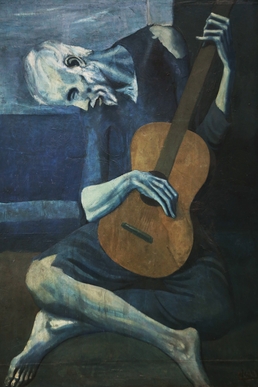
3. Les Demoiselles d’Avignon
Picasso wasn’t just famous for his paintings. He was also known for his many love affairs. And his Les Demoiselles d’Avignon painting showcases his reverence towards women and their sexuality.
The painting depicts five nude female prostitutes in a brothel. They do not appear traditionally feminine; instead, they are rather menacing. Picasso distorted the female figures so they are represented in geometric shapes.
Picasso began the painting in 1907, and it was quite controversial when it was unveiled. His contemporaries didn’t like it. The public also called it immoral when it was first exhibited in 1916.
But over time, art enthusiasts gained an appreciation for it as the first example of Cubism—Picasso and Georges Braque are credited for creating this art movement.
Les Demoiselles d’Avignon is on permanent display at the Museum of Modern Art in New York.
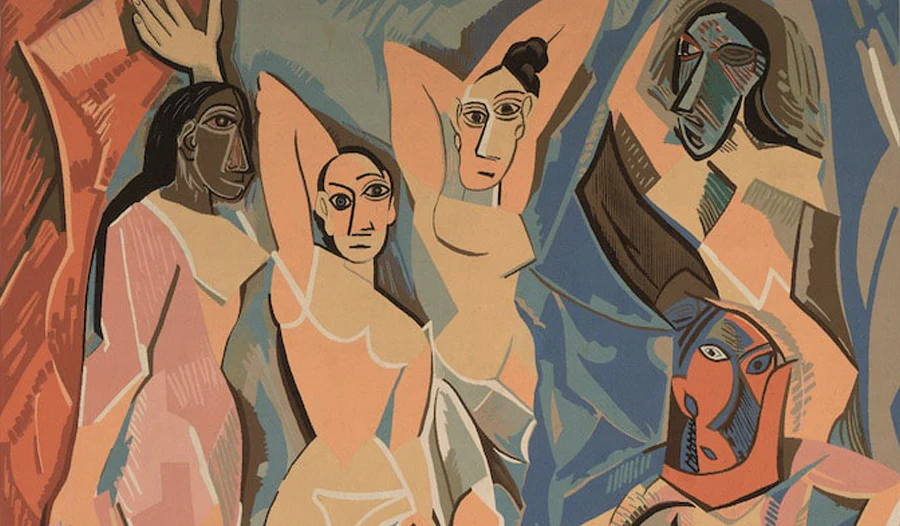
4. Portrait of Dora Maar
Picasso had a tumultuous relationship with Dora Maar, a French photographer, painter, and poet. She had been the subject of several of Picasso’s paintings.
One of which was the Portrait of Dora Maar, a 1937 oil-on-canvas painting. He painted it more than a year after they first met in Paris when Dora Maar was 29 and Picasso 55.
The painting shows a woman with a face with two views: frontal and profile. The eyes are facing opposite directions, meant to capture the different facets of Dora Maar, who was Picasso’s mistress for nine years.
Picasso began a relationship with Dora Maar when he was still with Marie-Therese Walter, his mistress when he was married to Olga Khokhlova.
Portrait of Dora Maar took nine months to finish. Picasso made hundreds of sketches to perfect the painting. Picasso showcased Dora Maar in many more paintings, some of which depict her in tears.
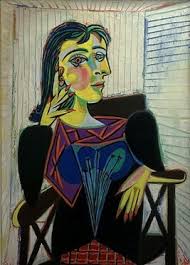
5. La Vie
La Vie is another famous painting from the Blue Period. It has many elements and contains a painting within a painting that Picasso is known for.
The most prominent figures in the painting are a naked couple facing a woman carrying a child. In the background is another naked couple in the upper half of the painting.
There is a sorrowful naked person in the bottom half. The entire painting is tinged with a blueish hue common in Picasso’s work during that period.
The painting is difficult to interpret because of the many complex features and characters.
Furthermore, Picasso once said to a fellow artist, “A painting, for me, speaks by itself, what good does it do, after all, to impart explanations? A painter has only one language, as for the rest …” and simply shrugged.
La Vie was completed in 1903 and is currently on display at the Cleveland Museum of Art.
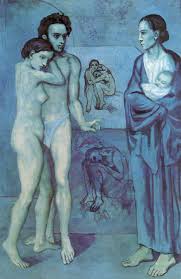
6. Portrait of Gertrude Stein
The term “starving artist” came about because many of them had to wait to make money from their paintings. Some artists depended on patrons so they could make a decent living while following their passion.
For Picasso, Gertrude Stein was an important patron.
Stein was an American writer and an avid art collector. She met and became friends with Picasso sometime in 1905, the second year of what was known as the Rose Period in the artist’s life.
The Rose Period represents a more positive and bright collection of paintings. Stein and her brother Leo, also an art collector, acquired three paintings from the Rose Period collection.
Suddenly, Picasso was a struggling artist no more.
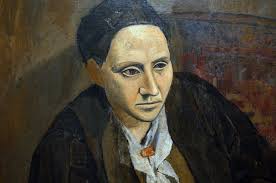
Stein didn’t just purchase Picasso’s paintings; she also hosted weekly salons and exhibited his work. These events further increased Picasso’s popularity. She sat through 80 to 90 sessions for Picasso to complete her portrait in 1906.
The Portrait of Gertrude Stein remained in Stein’s possession until her death in 1946, after which it was bequeathed to the Museum of Modern Art.
The oil-on-canvas painting is currently housed at the Metropolitan Museum of Art.
7. Ma Jolie
It takes an analytical mind to figure out where the pretty girl is in the Ma Jolie painting. It is an example of Analytic Cubism, which is the process of painting the subject into fractured and multi-layered structures.
It is a stark contrast from Les Demoiselles d’Avignon, which was an example of traditional Cubism.
Ma Jolie translates to “my pretty girl,” which was the refrain of a song that is often played in a Parisian music hall that Picasso frequented. It is also the nickname that Picasso used for one of his mistresses, Marcelle Humbert.
The painting can be seen at the Museum of Modern Art.
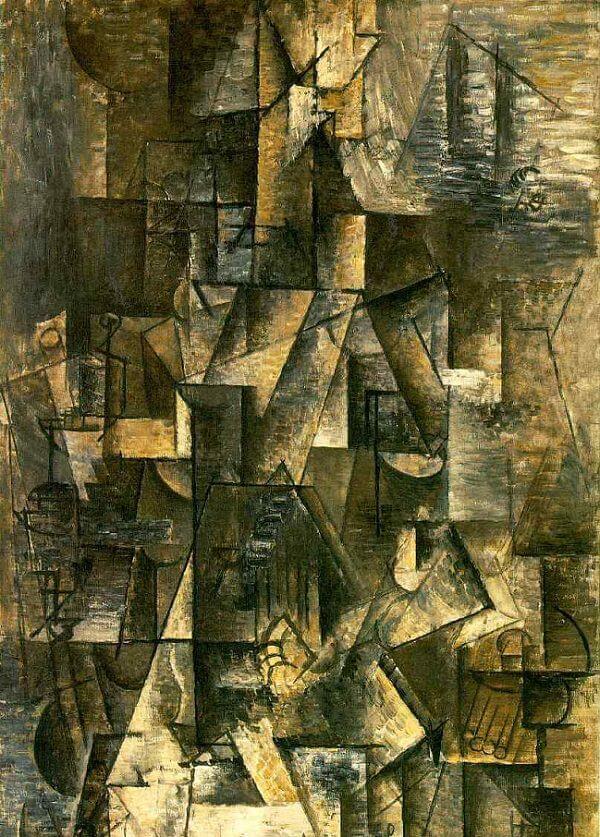
8. Self-Portrait
Picasso created self-portraits from the age of 15 until he was 90 years old, just a year before he died. It is interesting to see how his works evolved, from the different artistic styles he used to the way he saw himself.
His most popular self-portrait was the one he made in 1972 when he was 90 years old. The artwork is sometimes called Self-Portrait Facing Death. Picasso created it with crayons. It took several months to complete.
The artwork is currently at the Fuji Television Gallery in Tokyo.
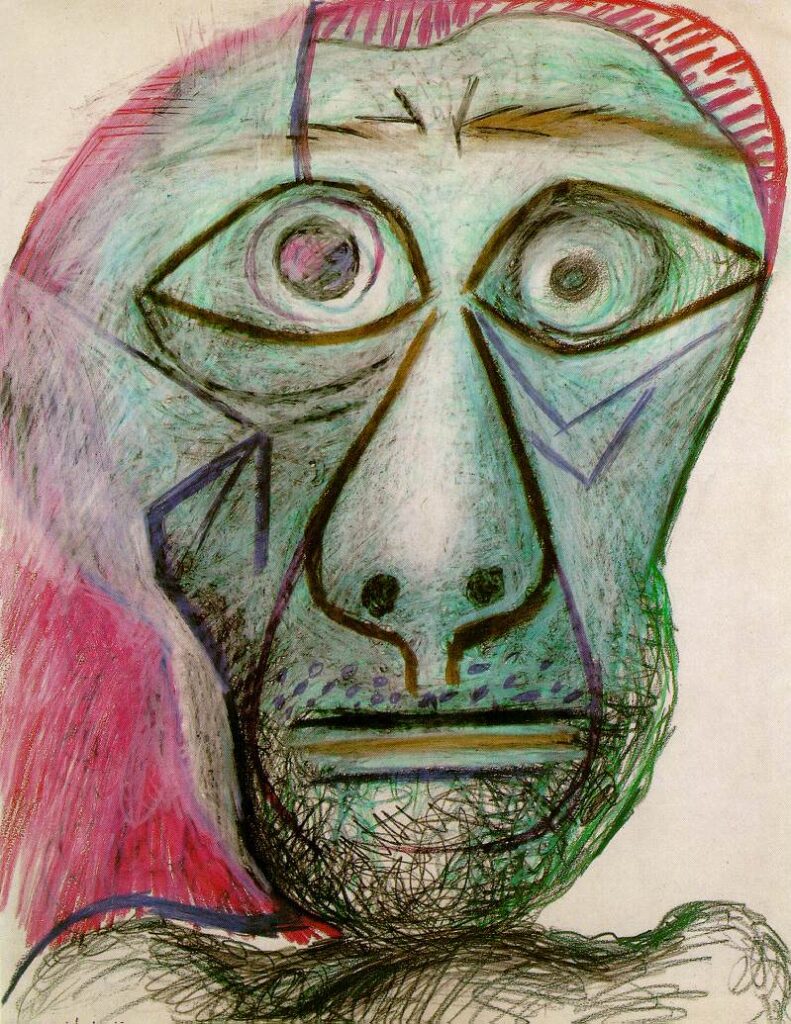
Picasso’s Legacy
Looking at Picasso’s artwork is a complex and illuminating journey. You can see different sides of the artist through the colors and styles he experimented with.
The evolution is poignant, and it clearly demonstrates Picasso’s versatility. It is also a showcase of a storied existence. He showcased his misery, love, and passion in all of his work.
It is a great thing that many of Picasso’s artworks are showcased all over the world. They are undoubtedly worth admiring, analyzing, and remembering.
These eight works are the smallest tip of the iceberg when learning about this incredible artist, and may they be a springboard for exploring even more about Picasso and his creativity.